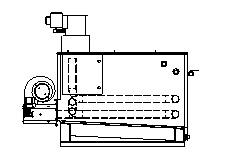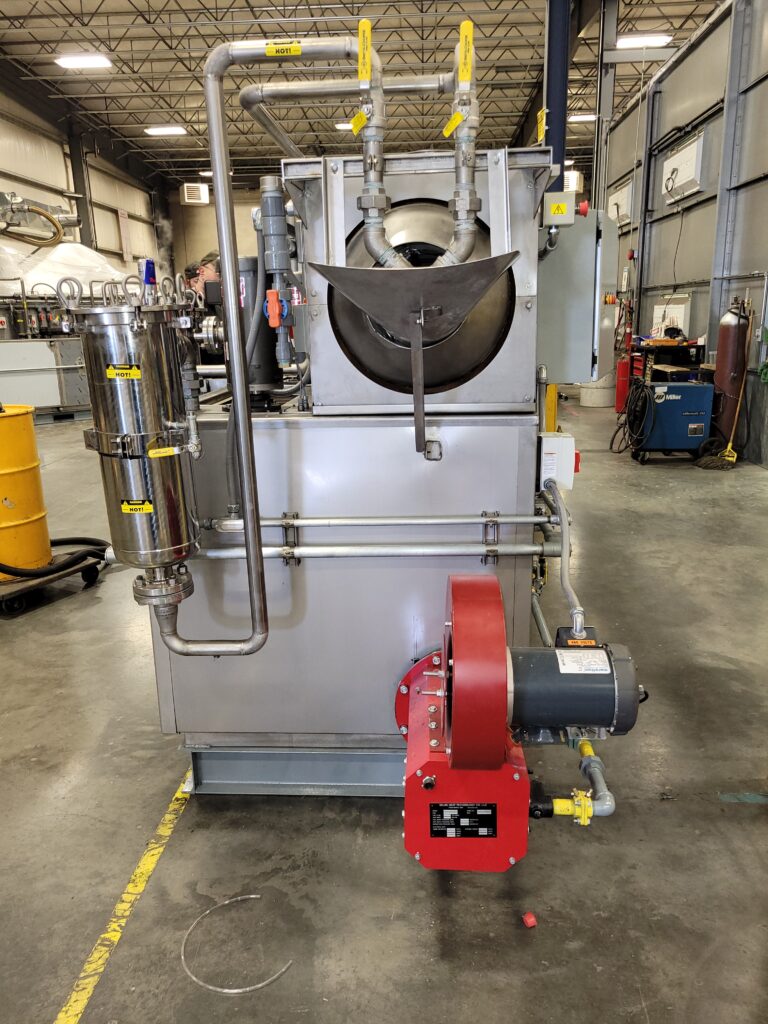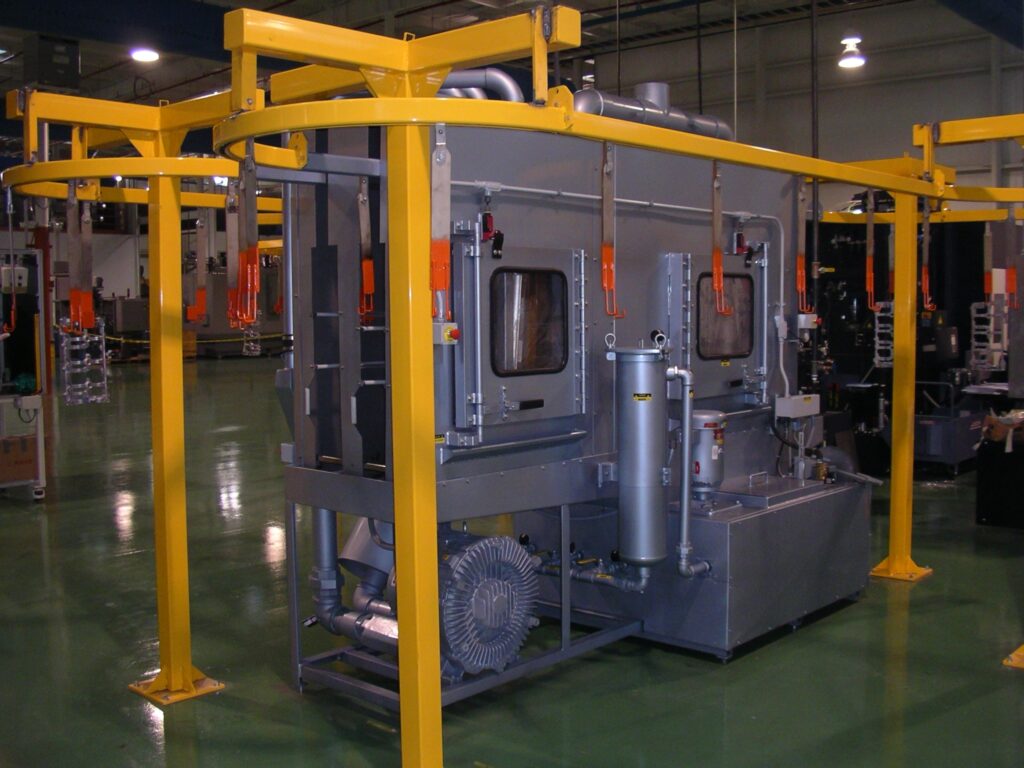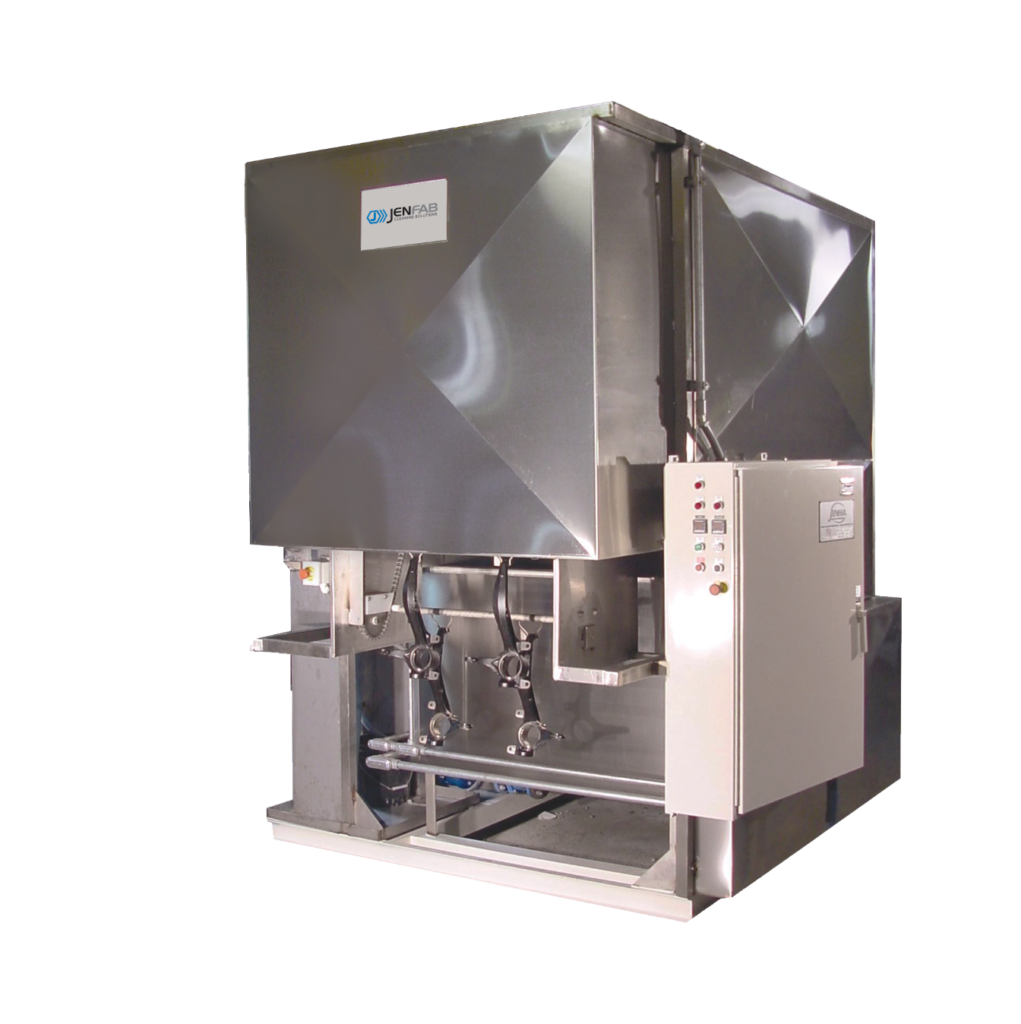Cleaning processes that work are essential for commercial ammunition production. As a manufacturer, the ability to meet critical tolerances and cleanliness requirements is essential to your process and product. Industrial aqueous parts washers help you produce safer, more reliable ammunition for the end-user.
Keep reading for more information about how aqueous parts washers aid in the manufacturing process. Then see which machine—a rotary drum or LeanClean 360—you should choose for your application.
Steps to Producing Brass Shell Casings
Every piece of ammunition includes a case, primer, powder and projectile. Creating brass casings for military, law enforcement and recreational use often follow these steps:
- Cupping
- Drawing
- Pocketing/Heading
- Tapering
- Trimming
- Punching
- Final Clean
Washing is a crucial part of the process. Cleaning shell casings protects equipment dies and prevents unwanted blemishes. Between almost every step, the shell casings must be cleaned. For example, brass casings go through multiple drawing stages. After every draw, they are annealed to increase their ductility and reduce hardness. Before drawing again, they are washed to remove the drawing lube and any tarnish caused by annealing.
Cleaning Ammunition: Common Contaminants
As discussed above, ammunition and military equipment manufacturers must clean shell casings after almost every step in the process. Aqueous parts washers make cleaning shell casings continuously safe and possible. These machines remove lubes, oils and surface oxides with water-based cleaning chemistries.
The following contaminants are common for brass, steel and aluminum casings:
- Annealing marks
- Chips
- Cutting oils
- Drawing lube
- Scale
- Tarnish
- Wax stearate
4 Manufacturing Processes for Brass Casings
Aqueous parts washers aren’t only for cleaning. These machines can perform soaping, washing, pickling and burnishing tasks.
- Soaping. The soaping process applies lube to the shell casings before sizing operations. Manufacturers often use a single spray rotary drum to complete the task.
- Washing. Drawing leaves behind lube, so brass casings must be cleaned with an alkaline wash chemical. Typically, shell cases undergo a wash, rinse and heated dry to remove contaminants.
- Pickling. After annealing, shell casings may be pickled. The pickling process removes surface oxides and scale left from heat treatment. If these contaminants aren’t removed, they will flake off during machining and cause surface defects. Pickling uses a citric or nitric acid aqueous cleaning chemistry.
- Burnishing. Cob dryers are used to burnish casings in bulk. The burnishing process doesn’t produce chips or remove material from the casing’s surface. Heat helps dry the shell casings, while the corn cob media improves their luster and absorbs moisture. Brass casings are gently tumbled inside a rotary drum dryer to expose all sides and edges to the corn cob meal.
Best Machines for Cleaning Brass Shell Casings
What machines work best for cleaning shell casings? Manufacturers may choose between a rotary drum or LeanClean 360 system. Either system can perform ammunition cleaning processes effectively, depending on the volume that you need to process.
The LeanClean 360
Jenfab’s LeanClean 360 models are cellular basket parts washers. They use a combination of immersion and spray cleaning to process parts in baskets. Inside the machine, the baskets rotate 360 degrees while immersed in cleaning solution. All fluids are filtered through a chip basket and recirculated through the high-pressure jets.
Key Considerations
- Best for low-volume applications. LeanCleans can only process six to 48 baskets per hour, depending on the model’s size and chosen cycle. For low-volume applications, LeanClean models are effective, and they take up less floor space.
- Excellent for high-end applications. Precision cleaning can be achieved with a LeanClean. Its fast recirculating rate means that fresh solution is always in contact with the casings. The LeanClean’s jets spray 60 gallons of solution per minute at 40 pounds per square inch of pressure. Plus, the basket’s rotation further exposes all holes and recesses.
- LeanCleans are batch systems. All LeanCleans require an operator to place the basket in the process chamber and start the machine. Operators are required to remove processed parts after the cycle is complete. Automated, in-line cleaning is not possible with this machine.
- LeanCleans have a smaller footprint. As opposed to many machines, the LeanClean is compact, taking up less space on your floor. LeanCleans are easy to maintain and repair. They are designed so operators can access all parts of the machine easily.
The Rotary Drum
Unlike LeanCleans, custom rotary drum washers don’t use baskets. As loose brass casings enter the system, they are met with spray cleaning and immersion. Spraying cleans the exterior of the shell casings while immersion flushes out the insides. Jenfab offers mini, mid-size and large rotary drums, in addition to dual drum systems.
Key Considerations
- Best for high-volume applications. Many ammunition and military equipment manufacturers need to clean thousands of shell casings each day. Rotary drums can handle high-volume shell casing applications with ease. Our largest rotary drums can process up to 45,000 pounds per hour. Processing parts at high rates doesn’t affect the rotary drum’s ability to handle delicate materials.
- Achieves continuous cleaning. Rotary drum systems offer continuous cleaning cycles that can keep up with high production rates. With a rotary drum parts washer, you can set up an in-line feed from your stamping press or other equipment.
- Requires minimal operator interaction. LeanCleans require someone to load and unload them. Rotary drum systems can be designed and installed so that they need minimal contact with operators. While the machine does its job, your employees can spend more time on other tasks.
- Rotary drums have a larger footprint. Rotary drums are big machines. They take up more square footage on your production floor. However, Jenfab’s rotary drum washers are designed to save 30 to 50 percent more floor space than competitors.
The Bottom Line
Rotary drum parts washers are typically the equipment of choice for most shell casing applications. They process high volumes of shell casings quickly and efficiently. Depending on your needs, you may require a parts cleaning system with a smaller footprint, making the LeanClean 360 the best option for you.
Request a quote or call (800) 524-9274 today for more information about how aqueous parts washers enhance ammunition production.


















